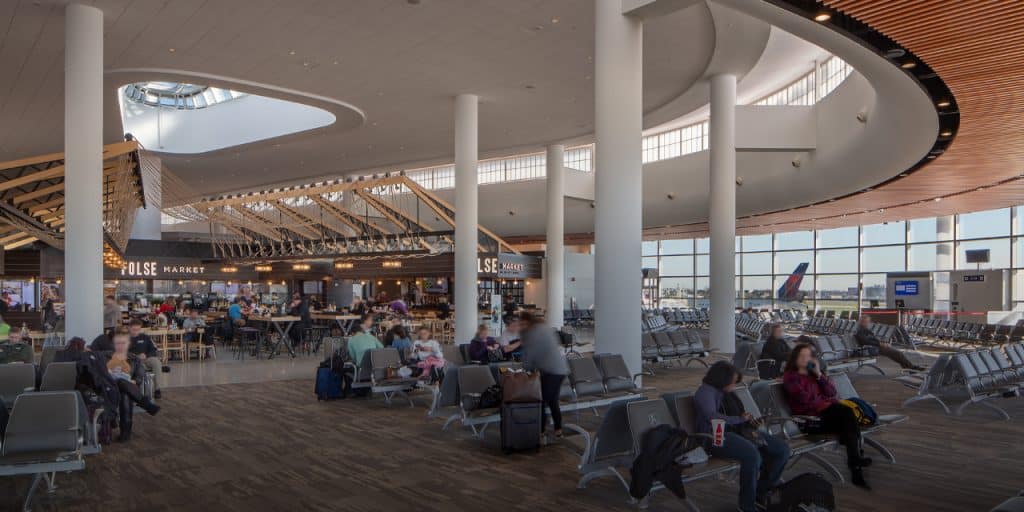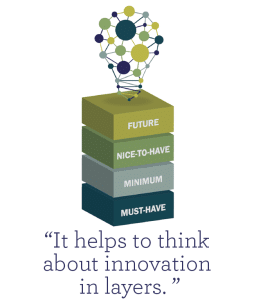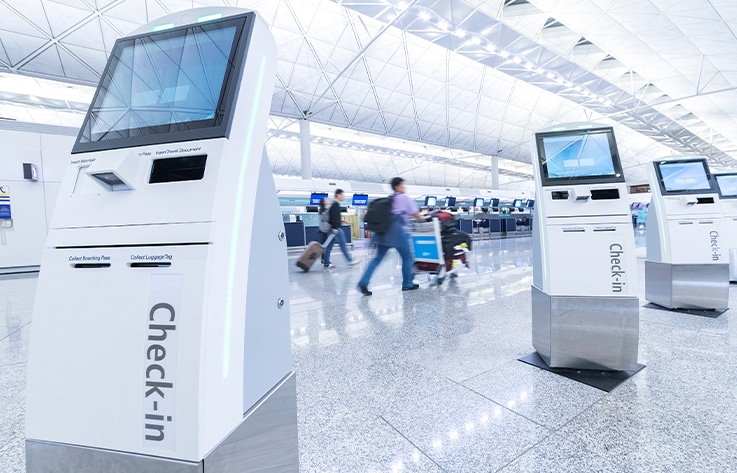Technology Elevates Airport Projects
Technology is playing an increasingly central role in airports’ daily operations, customer service and plans for the future. Today, air travelers use technology to simplify nearly every aspect of their trips – from purchasing tickets and checking flight status, to locating parking, checking baggage, navigating security, and enjoying on-site leisure, dining or shopping. Soon, technology innovations will enable airports to recognize and begin serving passengers as soon as they enter – offering assistance, advisories and targeted perks to improve their experience from the curb to the runway.
As technological advances reach the marketplace at increasing speed, airports are grappling with ways to best understand and take advantage of these advances, and how to incorporate them into their capital projects efficiently and seamlessly.
“Today, air travelers use technology to simplify nearly every aspect of their trips.”
Make Technology a Priority from the Start
Traditional airport planning and design begins with engaging a planner and architect to address increased passenger demand or infrastructure needs. But, while airport planning and design commonly includes cutting-edge architecture and striking aesthetics, their current and future technology needs often are not considered until much later. As a result, installing, integrating and commissioning IT systems become exponentially more difficult. Airports that prioritize innovation, and consider technology integration early, also can maximize a financial return. Merging experiential media environments with business analytics, for example, can dramatically increase concession revenue and, in turn, drive airport revenue higher.

An interior view of the new terminal at Louis Armstrong New Orleans International Airport (MSY)
 Technological Complexity – and the learning curve for understanding its inter-dependencies with other systems – is often not reflected in project schedules. Devoting too little time for installation, testing and commissioning can lead to costly budget and schedule overruns in the short term. In the long term, inadequate integration planning can result in lost revenue, missed growth opportunities, and unhappy end-users.
Technological Complexity – and the learning curve for understanding its inter-dependencies with other systems – is often not reflected in project schedules. Devoting too little time for installation, testing and commissioning can lead to costly budget and schedule overruns in the short term. In the long term, inadequate integration planning can result in lost revenue, missed growth opportunities, and unhappy end-users.
Prudent airport owners build in technology from the start, and align technology plans with business and facility needs. It helps to think about innovation in layers. The most successful projects begin with a list of infrastructure, hardware and software “must-haves,” such as emergency mass communications, TSA checkpoint equipment and other security and code-related technologies. Next, add in technology needed at a “minimum” to achieve business goals, followed “ideal” features that would be nice to have, but aren’t necessary. Finally, think creatively about “potentials” – a “wish list” of technologies to spur future business – even if those innovations are still in the laboratory.
Build in Flexibility and Plan for the Future
Once an airport’s need are prioritized, a flexible implementation plan will enable the incorporation of new and emerging technologies. It’s important to remember – what seems incredibly innovative today may be obsolete in five years. Technology – software, in particular – is constantly evolving and has a limited lifespan. A well-designed network infrastructure should be able to accommodate future technologies without major modifications

“Technologies can appear, flourish, and become viable or obsolete all within the span of a capital project.”
One component of a flexible technology plan is an “innovation team,” where ideas and emerging technologies are captured and revisited periodically during design and construction. Technologies can appear, flourish, and become viable or obsolete all within the span of a capital project. The innovation team helps to ensure that a new facility’s technology isn’t already outdated on opening day.
Artificial Intelligence (AI), for example, wasn’t part of airports’ vernacular a decade ago. Now, AI tools such as facial recognition are changing how airports secure their facilities, staff their terminals, and serve their passengers. Soon, passengers will be able to travel from the curb to their planes using only their faces, eliminating the need for boarding passes, identification or passports. If they need help finding their gate, passengers will be able to tap into airports’ augmented reality applications on their smart phones. And, they’ll be instantly rewarded with coupons and other vendor enticements as soon as they’re in the terminal. A decade ago, such technology seemed far off; today, airports are scrambling to find the right ways to incorporate it.
Thoughtful planning now can help airports quickly leverage tomorrow’s innovations. Pittsburgh International Airport, for example, has begun a $1.1- billion effort to downsize under-utilized facilities and build a new terminal that better meets its future needs and makes innovation a centerpiece. The airport is teaming with students and faculty at Carnegie Mellon University to develop and test ways to improve accessibility and the overall passenger experience. Innovations developed by the university will be tested at the airport, giving students real-world insight into how their technologies will work, in both Pittsburgh and throughout the industry.
Understand Technology’s Reach, Capabilities and Limitations
Airports depend on myriad computer-based systems to operate efficiently and safely around the clock – from security, to life-safety, to aviation traffic control and others. Not all systems are interconnected, however. While some systems must remain distinct, interconnection of others, such as fire alarm, video surveillance and access control systems, can create a virtual “situational-awareness” network that vastly improves overall operation and security.

“…merging video-surveillance, business analytics and biometrics such as facial recognition can create a highly personalized experience for each passenger…”
Integrating systems also can link security and business. For example, merging video-surveillance, business analytics and biometrics such as facial recognition can create a highly personalized experience for each passenger, which dramatically enhances customer satisfaction, security and operations.
Integration isn’t always easy. Connecting a new AI-based passenger wayfinding system with a “legacy” video-surveillance system, for example, can be challenging, time-consuming and costly. As a result, it’s vital to understand and accommodate the many interconnections required, and design new systems with future interconnectivity in mind.
Leverage Industry Experience
It is important to choose consultants and technologies carefully, keeping in mind that if something sounds too good to be true, it’s worth being skeptical. True technology experts – with hands-on, industry-specific experience – know what works and what doesn’t, understand an airport’s unique, 24-hour operations, and can predict which trends will become tomorrow’s realities. They also understand that prudently applied technology saves money and improves efficiency, and that even small improvements boost an airport’s image and bottom line.

“… even small improvements boost an airport’s image and bottom line.”
The youngest of my three children recently turned three. We’ve watched her grow, say her first words, take her first steps, send her first texts, and navigate YouTube like an expert. Technology has already become an integral part of her life. By properly leveraging technology’s power, she can go far. The same holds true for airports. By making technology a priority – not an afterthought – in their capital programs, airports are better equipped to leverage innovation and serve an increasingly connected public.


